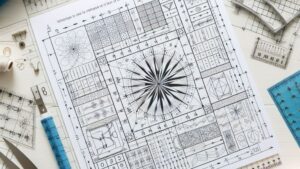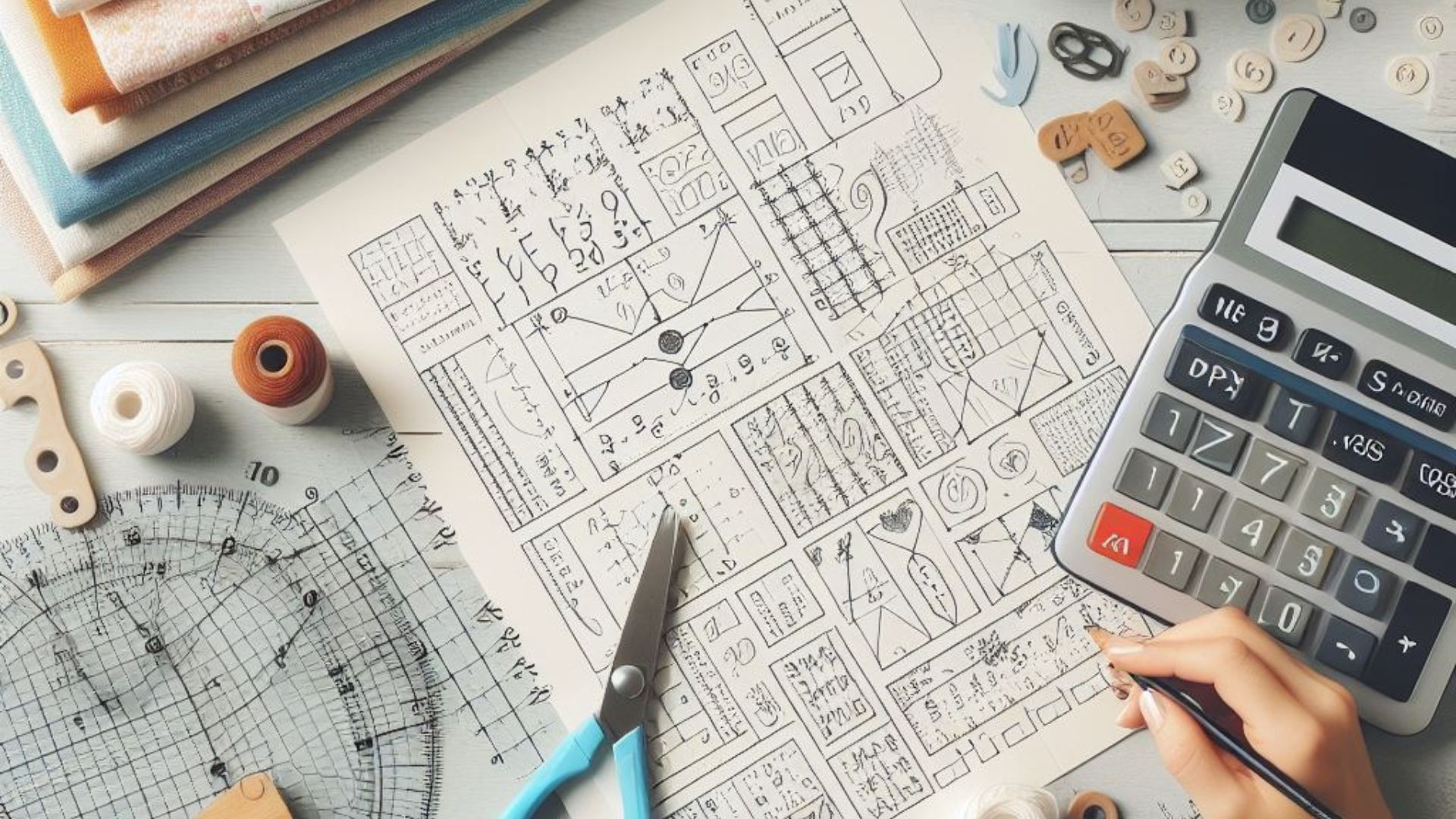Quilting is a delightful craft, but getting the fabric yardage right can be a puzzle. Whether you’re a seasoned quilter or just starting out, understanding how to calculate fabric yardage is crucial for a successful project.
In this guide, we’ll demystify the process and provide you with simple, foolproof methods to ensure you have the perfect amount of fabric for your quilt.
Understanding Fabric Yardage Calculation
1. Assessing Your Quilt Design
Before diving into calculations, consider your quilt design. Are you following a specific pattern, creating your own design, or making blocks of various sizes? Understanding the quilt’s layout is key to accurately estimating fabric requirements.
2. Gathering Essential Measurements
a. Block Measurements
If your quilt involves blocks, measure the dimensions of each block, including the length and width.
b. Sashing and Borders
For sashing and borders, measure the length and width needed. Take note of any variations in width or multiple borders.

c. Seam Allowances
Always account for seam allowances in your calculations. Typically, a ¼ inch seam allowance is standard in quilting.
3. Fabric Yardage Calculations
a. Calculating for Blocks
- Formula: Total number of blocks × (length of block + width of block + seam allowances)
- Example: If you have 20 blocks measuring 12 inches by 12 inches, with a ¼ inch seam allowance:
- 20 blocks × (12 inches + 12 inches + 0.25 inches) = Total fabric needed for blocks
b. Sashing and Borders
- Formula: Measure the length and width of sashing/borders. Add these measurements together and multiply by the number of sections. Then, add seam allowances.
- Example: For 4 borders, each 3 inches wide:
- (Length + Width) × 4 borders + seam allowances = Total fabric needed
4. Additional Considerations
a. Directional Prints and Fabric Matching
If your fabric has a directional print or requires specific alignment, consider buying extra fabric to ensure proper matching and placement.
b. Prewashing Fabric
Prewashing fabric can shrink it slightly. Adjust yardage calculations accordingly if you plan to prewash.
So,…
Mastering fabric yardage calculation for quilting is a skill that evolves with practice. By understanding your quilt design, taking precise measurements, and using simple calculations, you’ll confidently estimate the fabric needed for your next quilting masterpiece.
External Resources:
- National Quilters Circle – Fabric Yardage Calculation Guide
- The Spruce Crafts – Understanding Quilt Fabric Cuts and Yardage
- Connecting Threads – Quilting Calculators
Moving forward
Crafting a quilt is a journey filled with creativity and precision. With these fabric yardage calculation techniques, you’re equipped to measure and estimate fabric needs accurately, ensuring your quilting adventure is smooth and rewarding.
Tips for Efficient Fabric Usage
1. Keep a Record
Maintain a quilting journal or digital spreadsheet to record fabric yardage used for different projects. This log becomes invaluable for future estimations.
2. Plan and Sketch
Create a sketch or use quilting software to visualize your design. This helps in determining fabric placement and calculating yardage more accurately.
3. Buy Extra Fabric
It’s advisable to purchase a bit more fabric than calculated. This surplus is handy for mistakes, adjustments, or if you decide to add more elements to your quilt.
4. Utilize Fabric Scraps
Don’t overlook scraps! Organize and store them by size, as these can be used for smaller blocks, borders, or even patchwork projects.
5. Consult Quilting Communities
Engage with quilting forums or local quilting groups for advice and tips on fabric yardage calculation. Experienced quilters often have valuable insights to share.
Frequently Asked Questions About Fabric Yardage for Quilting
Q1: How do I calculate fabric yardage for backing?
A: Measure the quilt top’s length and width. Add extra inches for overhang and seam allowances. Then, divide by the usable width of the fabric to determine how many yards you need.
Q2: What if I’m using fabric with a repeating pattern?
A: To match patterns, consider the pattern’s repeat size and buy extra fabric accordingly. This ensures continuity in the design.
Q3: Can I estimate yardage for irregular shapes?
A: For irregular shapes, create paper templates and measure the area they cover. Then calculate yardage as you would for regular shapes.
Conclusion
Accurately calculating fabric yardage for quilting is an essential skill that empowers quilters to plan efficiently and execute their designs with confidence. By combining precise measurements, thoughtful planning, and a dash of creativity, you’ll be well on your way to creating stunning quilts while efficiently utilizing your fabric resources.
External Resources:
- National Quilters Circle – Fabric Yardage Calculation Guide
- The Spruce Crafts – Understanding Quilt Fabric Cuts and Yardage
- Connecting Threads – Quilting Calculators
Quilting is an art, and mastering fabric yardage calculation is one of the foundational skills that enriches this creative journey.
Comparison tabular
| Aspects | Fabric Yardage Calculation |
|---|---|
| Purpose | Determines the amount of fabric required for a quilting project |
| Considerations | Quilt design, block measurements, sashing, and borders |
| Calculations | Blocks: Total number × (length + width + seam allowance) |
| Sashing/Borders: (Length + Width) × Number of sections | |
| Additional Considerations | Directional prints, fabric matching, prewashing fabric |
| Efficiency Tips | Record keeping, planning, buying extra fabric, using scraps |
| FAQ Coverage | Backing fabric, repeating patterns, irregular shapes |
This table offers a quick reference for understanding the essential elements of fabric yardage calculation in quilting, considerations for accurate estimates, efficiency tips, and coverage of frequently asked questions to address various scenarios quilters might encounter.
Wrapping up
So, whether you’re meticulously planning a new masterpiece or exploring the wonders of quilting, may your fabric yardage calculations always be spot on, and may your quilting journey be filled with joy, creativity, and endless inspiration.
Happy quilting!

For over a decade, I’ve been Mike, an artist, crafter, and designer deeply immersed in the Croc world. I thrive on crafting unique, size-inclusive patterns, fostering creativity, and sharing them on ktforum.com. My designs aim to ignite your creative spark and delight you, ensuring clarity and ease of use through rigorous testing. Join me in expressing your creative flair and showcasing your craft with joy.
Related Posts
- Quilting with Flannel Fabric: Your Comprehensive Guide
Quilting is a beautiful craft that allows you to create cozy, functional, and artistic pieces.…
- Essential Tools for Quilting: Your Comprehensive Guide
Quilting is a cherished art form that weaves together creativity and skill. Whether you're a…
- Quilting Without Templates: A Guide to Free-Form Quilting
Quilting is a delightful craft that allows you to weave together fabric, creativity, and skill…
- Should You Prewash Your Fabric Before Quilting?
Quilting is an art form that combines creativity, precision, and a touch of practicality. One…

